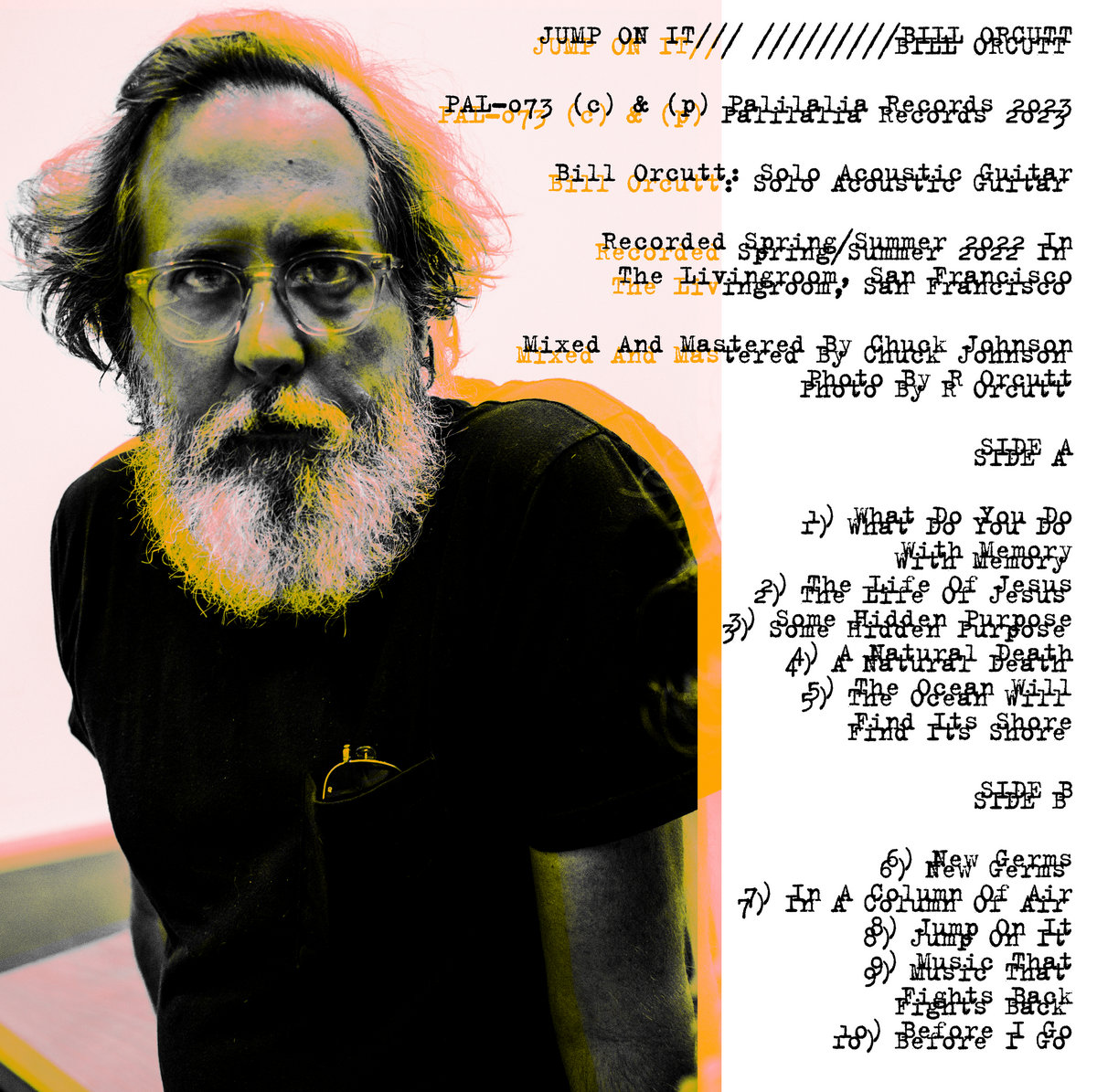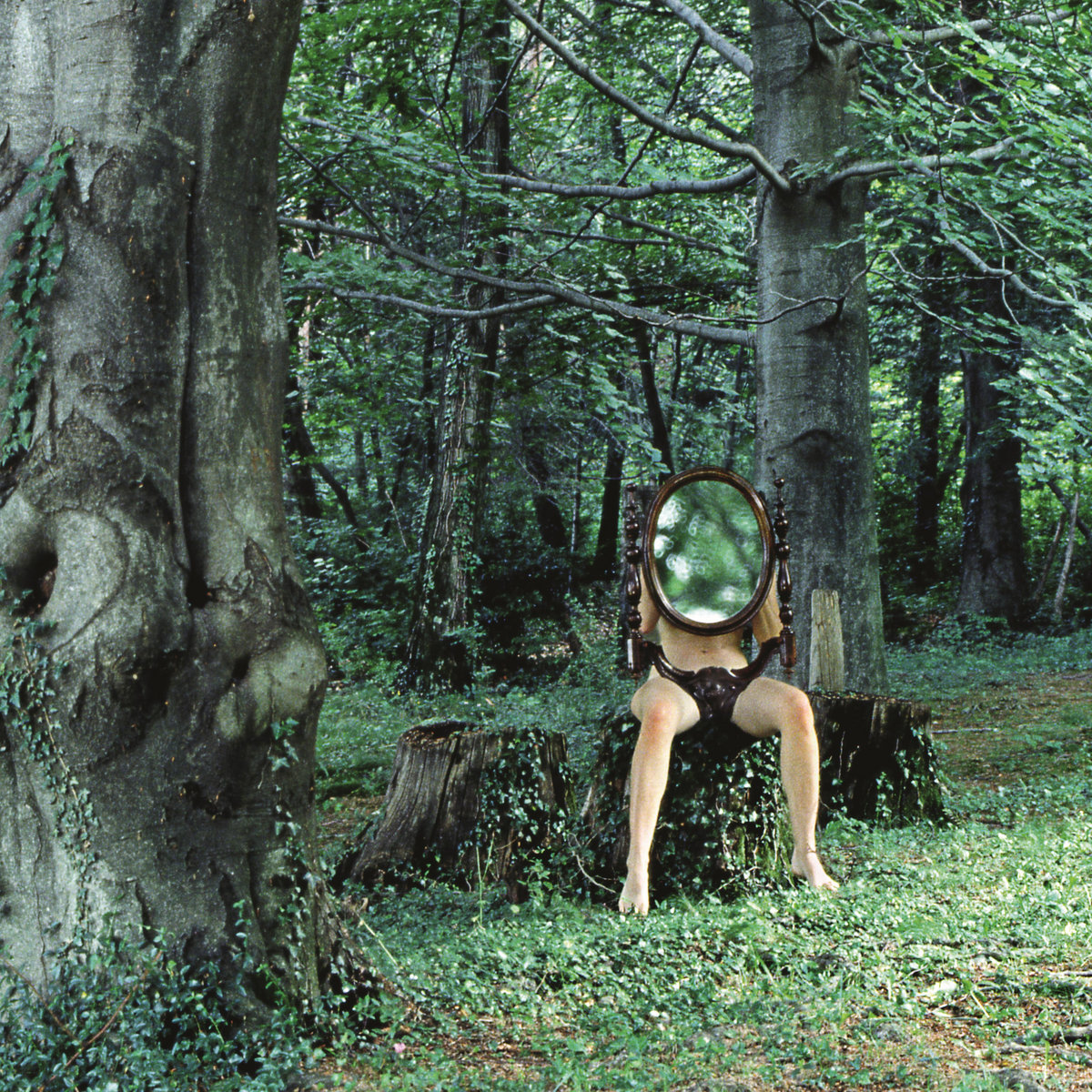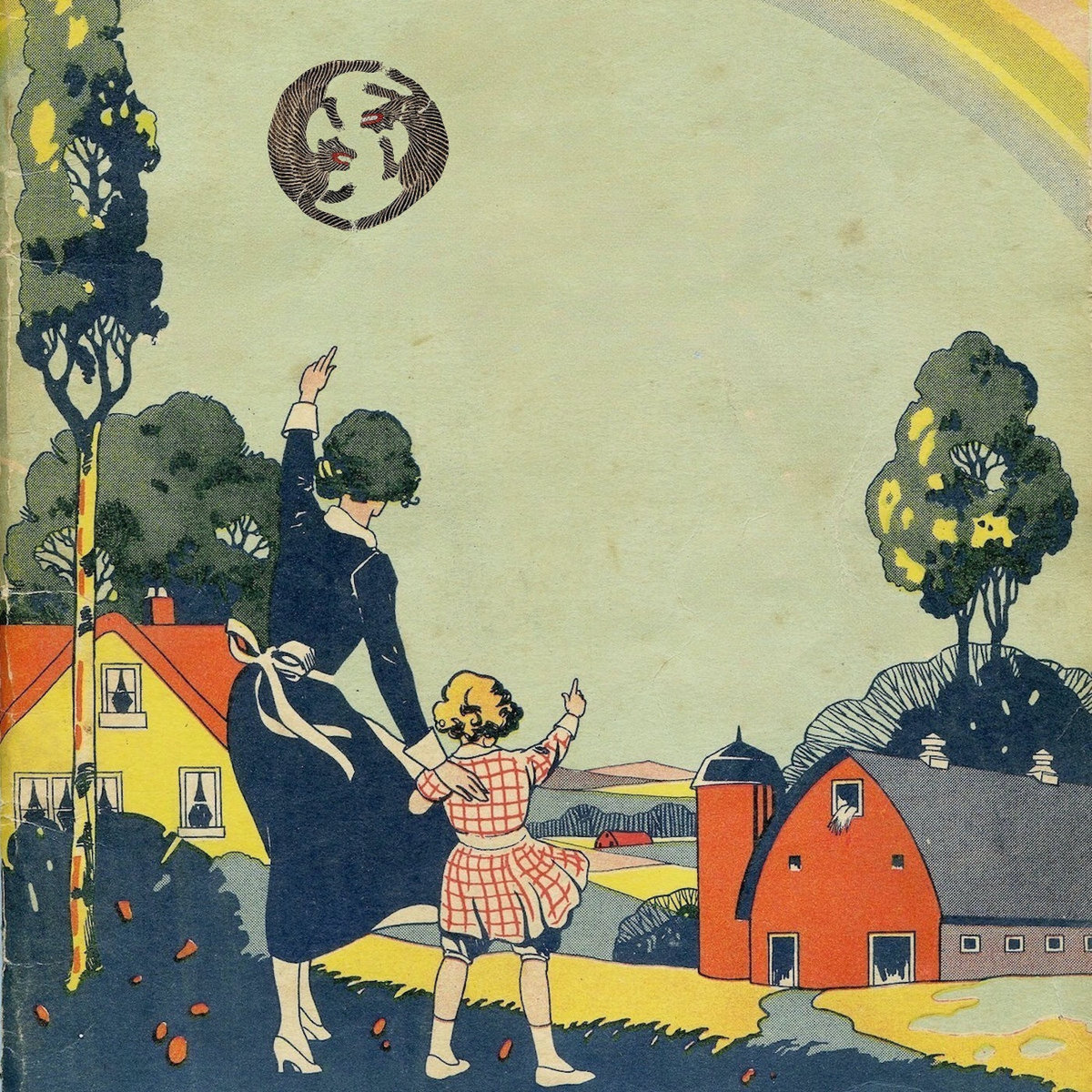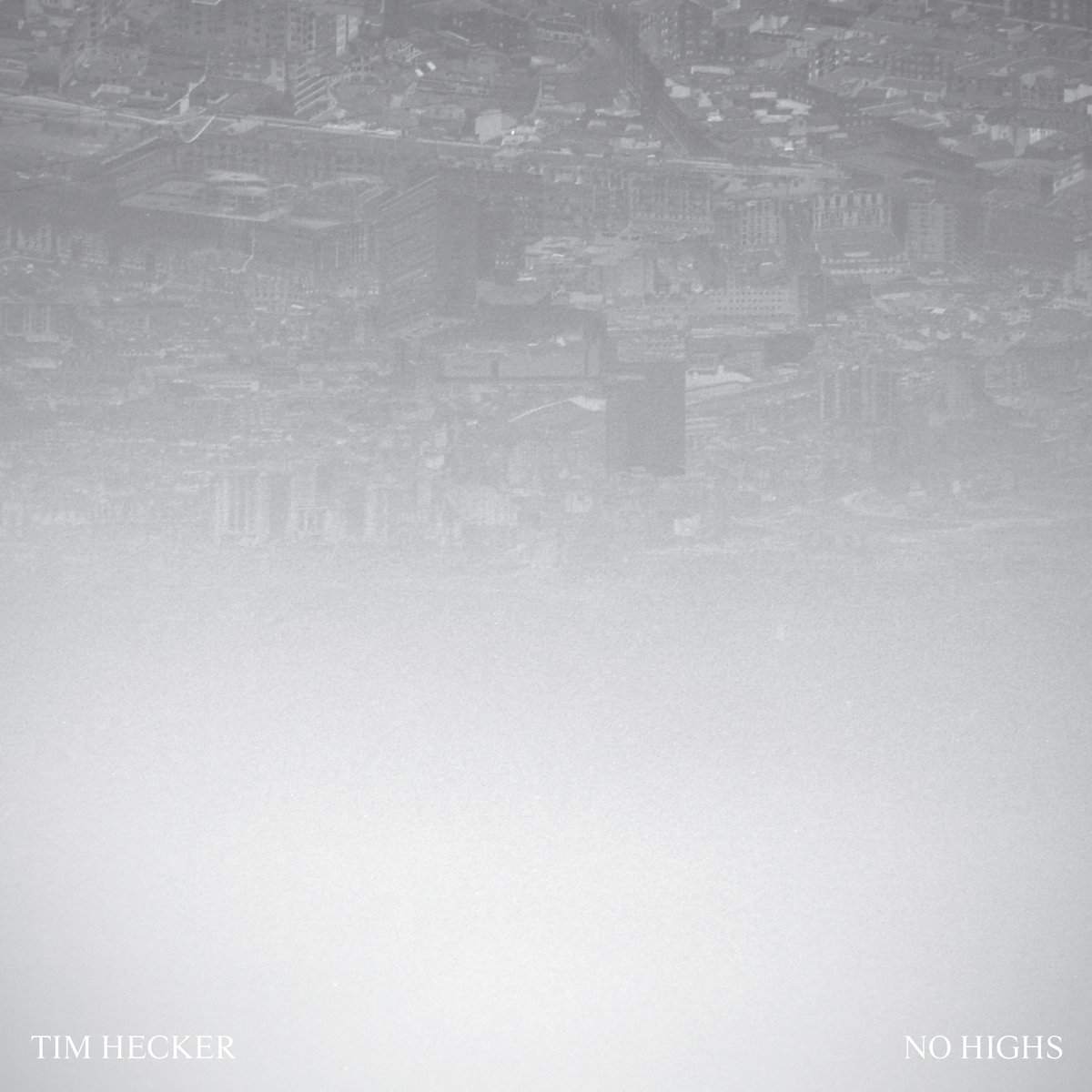 This latest LP from San Francisco-based guitar visionary Bill Orcutt is a spiritual successor of sorts to 2013's A History of Every One, as that was apparently his last solo acoustic guitar album. The resemblance between the two albums largely ends there, however, as Jump On It is as different from the deconstructed standards of History as it is from last week's Chatham-esque guitar quartet performance for NPR. While I do enjoy Orcutt's Editions Mego solo era quite a bit, there is no denying that his artistry has evolved dramatically over the last decade and his recent work definitely connects with me on a deeper level. In more concrete terms, Orcutt's work no longer resembles the choppy, convulsive, and possessed-sounding fare of History, as he has since reined in his more fiery, passionate impulses enough to leave more room for passages of tender, simple beauty. In fact, Jump On It might be the farthest that the balance has swung towards the latter, as the characteristic Orcutt violence is a rare presence in the collection of quietly lovely and spontaneous-sounding guitar miniatures.
This latest LP from San Francisco-based guitar visionary Bill Orcutt is a spiritual successor of sorts to 2013's A History of Every One, as that was apparently his last solo acoustic guitar album. The resemblance between the two albums largely ends there, however, as Jump On It is as different from the deconstructed standards of History as it is from last week's Chatham-esque guitar quartet performance for NPR. While I do enjoy Orcutt's Editions Mego solo era quite a bit, there is no denying that his artistry has evolved dramatically over the last decade and his recent work definitely connects with me on a deeper level. In more concrete terms, Orcutt's work no longer resembles the choppy, convulsive, and possessed-sounding fare of History, as he has since reined in his more fiery, passionate impulses enough to leave more room for passages of tender, simple beauty. In fact, Jump On It might be the farthest that the balance has swung towards the latter, as the characteristic Orcutt violence is a rare presence in the collection of quietly lovely and spontaneous-sounding guitar miniatures.
The album opens in appropriately gorgeous fashion, as the first minute of "What Do You Do With Memory" is devoted to a tender, halting and bittersweet arpeggio motif, though the piece then takes a detour before reprising that wonderful theme for the finale. The detour is admittedly brief, but so is the song itself, which illustrates a central feature of this album: these pieces generally feel like a series of spontaneous snapshots/3-minute vignettes rather than fully formed compositions that build into something more. That is not meant as a critique, but it does mean that Jump On It is something other than Orcutt's next major artistic statement. I am tempted to say that most of this album feels akin to a pleasant but loose improvisation around a campfire, but there are also some pieces that evoke an usually meditative Django Reinhardt playing alone in a late-night hotel room.



 Finally seeing the light of day after two years of production related delays, with the recordings dating back even longer than that, this collaboration between Daniel Burke (IOS) and the late Stefan Weisser (Z'EV) could almost be a time capsule, except the sound of it is entirely timeless. Recorded and mixed between 2008 and 2012, the two lengthy pieces that make up this self-titled album clearly bear the mark of both individuals, but mesh together beautifully in the very different sounding sides of the record.
Finally seeing the light of day after two years of production related delays, with the recordings dating back even longer than that, this collaboration between Daniel Burke (IOS) and the late Stefan Weisser (Z'EV) could almost be a time capsule, except the sound of it is entirely timeless. Recorded and mixed between 2008 and 2012, the two lengthy pieces that make up this self-titled album clearly bear the mark of both individuals, but mesh together beautifully in the very different sounding sides of the record. A 10" record rigidly divided into four different pieces (each mostly around four minutes in length), this new work from the enigmatic sounding, long-standing UK project is mostly centered around the same authoritarian lyrical elements, but each differs significantly in their compositional approach. A complex mix of styles define each piece, neither of which are too similar to another, but are unquestionably Contrastate, and showcases all of the unique sounds they are known for.
A 10" record rigidly divided into four different pieces (each mostly around four minutes in length), this new work from the enigmatic sounding, long-standing UK project is mostly centered around the same authoritarian lyrical elements, but each differs significantly in their compositional approach. A complex mix of styles define each piece, neither of which are too similar to another, but are unquestionably Contrastate, and showcases all of the unique sounds they are known for. This eleventh album from Germany's Kammerflimmer Kollektief is not my first exposure to the project, but it did succeed in making me wonder why I have not been a passionate fan of their work before now. Admittedly, the idea of harmonium-driven free-form jazz/psychedelia is not quite my cup of tea on paper, which goes a long way towards explaining why I was so slow to embrace this project, yet the right execution can transform just about anything into gold and this foursome are extremely good at what they do. It also does not hurt that the Kammerflimmer gang have some intriguing and unusual inspirations, as they namecheck both Franz Mesmer and underheard German psychonauts The Cocoon in addition to the requisite nod to Can. Kammerflimmer Kollektief certainly assimilate those influences in a unique way though, as the best songs on Schemen sound like a killer post-rock/psych band blessed with an unusually great rhythm section and real talents for roiling guitar noise, simmering tension, and volcanic catharsis.
This eleventh album from Germany's Kammerflimmer Kollektief is not my first exposure to the project, but it did succeed in making me wonder why I have not been a passionate fan of their work before now. Admittedly, the idea of harmonium-driven free-form jazz/psychedelia is not quite my cup of tea on paper, which goes a long way towards explaining why I was so slow to embrace this project, yet the right execution can transform just about anything into gold and this foursome are extremely good at what they do. It also does not hurt that the Kammerflimmer gang have some intriguing and unusual inspirations, as they namecheck both Franz Mesmer and underheard German psychonauts The Cocoon in addition to the requisite nod to Can. Kammerflimmer Kollektief certainly assimilate those influences in a unique way though, as the best songs on Schemen sound like a killer post-rock/psych band blessed with an unusually great rhythm section and real talents for roiling guitar noise, simmering tension, and volcanic catharsis. In the village of Stanton Drew, and dating from around 4,500 years ago, is the third largest complex of standing stone circles in England. David Colohan visited the site one rainy morning in early 2020 and was inspired by the mix of winter sunshine and eerie ancient atmosphere to create a record of his impressions. Fair enough, since people rarely send postcards from their travels anymore. Actually, the postcard analogy only works if it allows for someone designing a postcard when they get home, since Colohan's use of field recordings is minimal and he doesn't really create music in situ. He's done this before with other locations but A Lunar Standstill is easily his most consistent recording.
In the village of Stanton Drew, and dating from around 4,500 years ago, is the third largest complex of standing stone circles in England. David Colohan visited the site one rainy morning in early 2020 and was inspired by the mix of winter sunshine and eerie ancient atmosphere to create a record of his impressions. Fair enough, since people rarely send postcards from their travels anymore. Actually, the postcard analogy only works if it allows for someone designing a postcard when they get home, since Colohan's use of field recordings is minimal and he doesn't really create music in situ. He's done this before with other locations but A Lunar Standstill is easily his most consistent recording. This latest release from husband and wife duo Zach & Denny Corsa appears to be their fifth full-length under the Nonconnah name (the duo were previously known as Lost Trail) and it is characteristically wonderful. As is the norm for Nonconnah, Unicorn Family was culled from several years of recordings featuring a host of eclectic collaborators (folks from Lilys, Half Japanese, Fire-Toolz, etc.) and those recordings have been expertly stitched together into beautifully layered and evocative soundscapes teeming with cool tape effects, thought-provoking samples, and killer shoegaze-inspired guitar work. In short, business as usual, but Nonconnah's business is consistently being one of the greatest drone projects on earth, so this is already a lock for one of my favorite albums of the year. Aside from the presence of a lovely lo-fi folk gem with actual singing, the only other notable departures from Nonconnah's existing run of gorgeous albums are shorter song durations than usual and the fact that the duo's samples have more of an eschatological bent. I suppose this album is an unusually focused and distilled statement as well, but that feels like a lateral move given how much I loved the sprawling immensity of Don't Go Down To Lonesome Holler.
This latest release from husband and wife duo Zach & Denny Corsa appears to be their fifth full-length under the Nonconnah name (the duo were previously known as Lost Trail) and it is characteristically wonderful. As is the norm for Nonconnah, Unicorn Family was culled from several years of recordings featuring a host of eclectic collaborators (folks from Lilys, Half Japanese, Fire-Toolz, etc.) and those recordings have been expertly stitched together into beautifully layered and evocative soundscapes teeming with cool tape effects, thought-provoking samples, and killer shoegaze-inspired guitar work. In short, business as usual, but Nonconnah's business is consistently being one of the greatest drone projects on earth, so this is already a lock for one of my favorite albums of the year. Aside from the presence of a lovely lo-fi folk gem with actual singing, the only other notable departures from Nonconnah's existing run of gorgeous albums are shorter song durations than usual and the fact that the duo's samples have more of an eschatological bent. I suppose this album is an unusually focused and distilled statement as well, but that feels like a lateral move given how much I loved the sprawling immensity of Don't Go Down To Lonesome Holler. This latest opus from Tim Hecker is amusingly billed as "a beacon of unease against the deluge of false positive corporate ambient." Given the weighty themes of his previous albums, Hecker's actual inspiration presumably runs much deeper than that, yet the "beacon of unease" part of that claim may be more literal than it sounds, as one of the album's central features is described as "Morse code pulse programming." While I am not well-versed enough in Morse code to determine if Hecker's oddly timed rhythms are covertly incorporating text or a narrative into these warped and nightmarish soundscapes, the gnarled and harrowing melodies that accompany those erratic pulses are more than enough to make the album thoroughly compelling listening regardless. Aside from that, No Highs marks yet another significant creative breakthrough for a formidable artist hellbent on continual reinvention and bold evolution. While it is hard to predict whether or not No Highs will someday be considered one of Hecker's defining masterpieces or merely an admirable and unique detour, its handful of set pieces feel quite brilliant to me and I do not expect my feelings to change on that point..
This latest opus from Tim Hecker is amusingly billed as "a beacon of unease against the deluge of false positive corporate ambient." Given the weighty themes of his previous albums, Hecker's actual inspiration presumably runs much deeper than that, yet the "beacon of unease" part of that claim may be more literal than it sounds, as one of the album's central features is described as "Morse code pulse programming." While I am not well-versed enough in Morse code to determine if Hecker's oddly timed rhythms are covertly incorporating text or a narrative into these warped and nightmarish soundscapes, the gnarled and harrowing melodies that accompany those erratic pulses are more than enough to make the album thoroughly compelling listening regardless. Aside from that, No Highs marks yet another significant creative breakthrough for a formidable artist hellbent on continual reinvention and bold evolution. While it is hard to predict whether or not No Highs will someday be considered one of Hecker's defining masterpieces or merely an admirable and unique detour, its handful of set pieces feel quite brilliant to me and I do not expect my feelings to change on that point.. This is the debut collaboration between two Berlin-based Peruvian musicians and also marks my first exposure to percussionist Laura Robles. I am, however, reasonably familiar with the alien soundscapes of Ale Hop (Alejandra Cárdenas) and this union seems to have inspired some of her finest work to date. Notably, Robles is "reputed to be one of the best cajón players in Peru," which is useful context given how radically (yet lovingly) the pair deconstruct and reinvigorate the instrument ("a symbol of resistance, experimentation and transformation" in Peru). In more practical terms, that means that Cárdenas and Robles dramatically disrupt, distort, and repurpose traditional dance rhythms into a wild psychotropic mindfuck. In fact, it sometimes sounds like Robles recorded her parts alone as a freeform performance at an Ayahuasca ceremony or something, but the seemingly roving and divergent threads always come together in impressive fashion in the end. Amusingly, I would have thought that the enigmatically and erratically shifting rhythms of Agua dolce would be damn near impossible to dance to, yet these pieces apparently made quite a splash when the duo coupled with dancer/choreographer Liza Alpiźar Aguilar for the Heroines Of Sound festival. Whether or not that means that I would be a terrible choreographer is hard to say, however, as the finished album may have ultimately landed in far more lysergic territory due to Cárdenas' additional edits and production wizardry.
This is the debut collaboration between two Berlin-based Peruvian musicians and also marks my first exposure to percussionist Laura Robles. I am, however, reasonably familiar with the alien soundscapes of Ale Hop (Alejandra Cárdenas) and this union seems to have inspired some of her finest work to date. Notably, Robles is "reputed to be one of the best cajón players in Peru," which is useful context given how radically (yet lovingly) the pair deconstruct and reinvigorate the instrument ("a symbol of resistance, experimentation and transformation" in Peru). In more practical terms, that means that Cárdenas and Robles dramatically disrupt, distort, and repurpose traditional dance rhythms into a wild psychotropic mindfuck. In fact, it sometimes sounds like Robles recorded her parts alone as a freeform performance at an Ayahuasca ceremony or something, but the seemingly roving and divergent threads always come together in impressive fashion in the end. Amusingly, I would have thought that the enigmatically and erratically shifting rhythms of Agua dolce would be damn near impossible to dance to, yet these pieces apparently made quite a splash when the duo coupled with dancer/choreographer Liza Alpiźar Aguilar for the Heroines Of Sound festival. Whether or not that means that I would be a terrible choreographer is hard to say, however, as the finished album may have ultimately landed in far more lysergic territory due to Cárdenas' additional edits and production wizardry. This is my first exposure to this UK-based collective centered around Gavin Miller (worriedaboutsatan) and Sophie Green (formerly of Her Name is Calla), but they have been fitfully releasing albums for more than a decade now. Their last major release, Scavengers, was back in 2016 on Time-Released Sound, so Eyes Like Pools both ends a lengthy hiatus and marks the collective’s first appearance on Athens’ sound in silence label. Much like Miller’s worriedaboutsatan project, this latest statement from Marta Mist occupies a vaguely cinematic stylistic niche where ambient and post-rock blur together, but Eyes Like Pools parts ways from worriedaboutsatan by swapping out electronic beats for Green’s achingly lovely violin melodies. While the more ambient side of Marta Mist’s current vision is appropriately warm and immersive, those pieces tend to be quite brief and the more substantial string-driven pieces are the true heart of the album (and it is a fiery heart indeed).
This is my first exposure to this UK-based collective centered around Gavin Miller (worriedaboutsatan) and Sophie Green (formerly of Her Name is Calla), but they have been fitfully releasing albums for more than a decade now. Their last major release, Scavengers, was back in 2016 on Time-Released Sound, so Eyes Like Pools both ends a lengthy hiatus and marks the collective’s first appearance on Athens’ sound in silence label. Much like Miller’s worriedaboutsatan project, this latest statement from Marta Mist occupies a vaguely cinematic stylistic niche where ambient and post-rock blur together, but Eyes Like Pools parts ways from worriedaboutsatan by swapping out electronic beats for Green’s achingly lovely violin melodies. While the more ambient side of Marta Mist’s current vision is appropriately warm and immersive, those pieces tend to be quite brief and the more substantial string-driven pieces are the true heart of the album (and it is a fiery heart indeed). William Basinski recorded this music during his time living in San Francisco, when he presumably visited Clocktower Beach. Considering that Basinski once created On Time Out Of Time—music in tribute to quantum entanglement and the theories of Einstein and Rosen, and Einstein, Rosen, and Podolsky, using source recordings of the 1.3 billion year old sounds of two distant massive black holes—undoubtedly the subject matter of The Clocktower at the Beach is one of his more straightforward creations. Fair enough, it is one of his earliest drone pieces, yet his methodology is as intriguing as anything he's done, and (most important of all) the music is a memorable journey into the sadness of things. Back to "mono no aware," then.
William Basinski recorded this music during his time living in San Francisco, when he presumably visited Clocktower Beach. Considering that Basinski once created On Time Out Of Time—music in tribute to quantum entanglement and the theories of Einstein and Rosen, and Einstein, Rosen, and Podolsky, using source recordings of the 1.3 billion year old sounds of two distant massive black holes—undoubtedly the subject matter of The Clocktower at the Beach is one of his more straightforward creations. Fair enough, it is one of his earliest drone pieces, yet his methodology is as intriguing as anything he's done, and (most important of all) the music is a memorable journey into the sadness of things. Back to "mono no aware," then.
